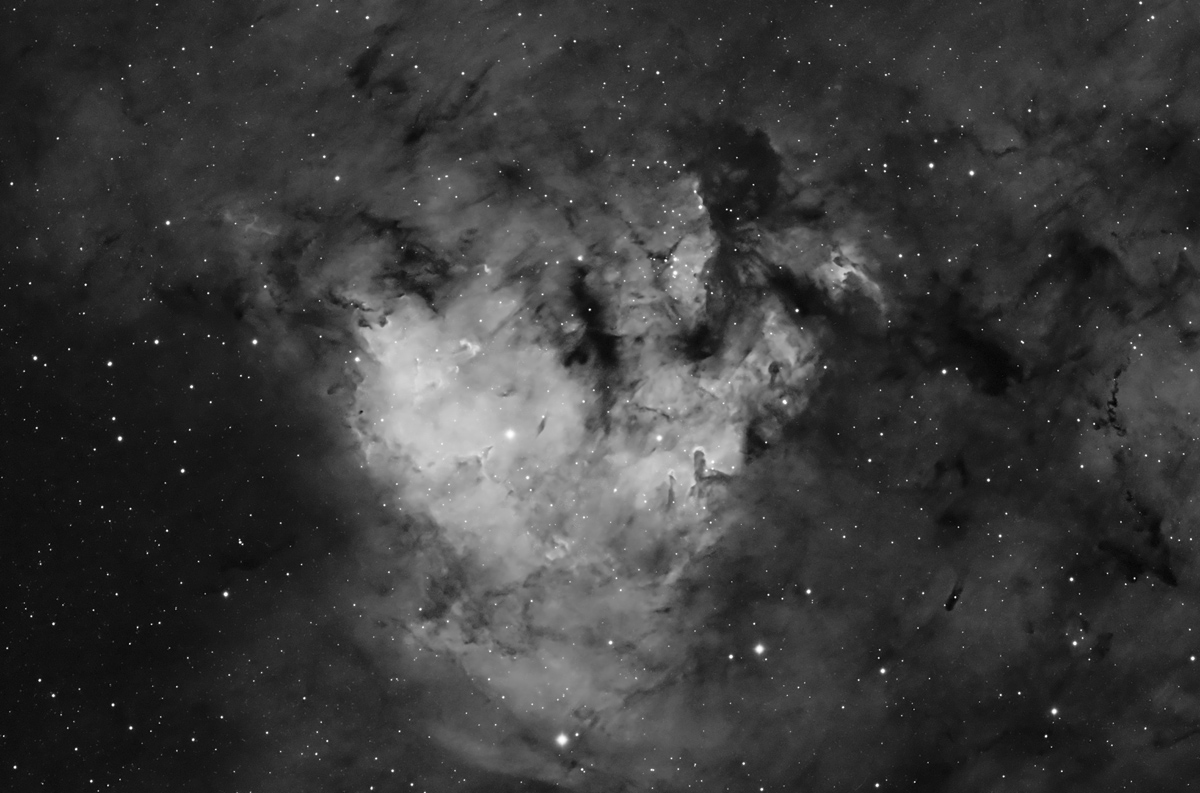 |
Cederblad 214 (Sharpless 171) -
Emission Nebula in Cepheus
 |
Copyright 2010 Hap Griffin
Cederblad 214 (or alternately known in other catalogs as Sharpless 171) is a large emission nebula in the constellation of Cepheus. Prominently visible are a number of bright rimmed globules undergoing a process called photoevaporation, whereby radiation from nearby stars is eroding the light gaseous elements away, leaving heavier and darker dust clouds. The compression and evolution of these globules leads to star formation. Our own sun and solar system was likely formed in a similar manner from the remnants of earlier generations of stars that gave up the heavier elements that they had synthesized during their lifetimes when they ended their existence in supernova explosions.
CED 214 lies at a
distance of approximately 2750 light-years.
This image was captured through a narrowband filter admitting only a narrow
slice of spectrum around the wavelength of glowing hydrogen. Thus it is a
monochrome (single color) image displayed as shades of grey.
Date/Location:
July 3, 2010 Griffin/Hunter
Observatory Bethune, SC
Camera: QSI 583wsg
Filters: Astrodon E Series Generation 2 HA (5nm)
CCD Temperature: -10 C
Instrument: Takahashi FSQ-106N
Focal Ratio: f/5
Mount: AP-1200
Guiding: Auto via the QSI camera's built in Off-Axis Guider
mirror and an SBIG ST-402 Guider
Conditions: Clear but with a 3rd quarter moon nearby
Weather: 60 F, still
Exposure: 180 minutes total (9 x 20 min HA)
Capture: CCDAutopilot 4 w/ Maxim DL Camera Control, focused automatically w/
FocusMax
Processing: Frame calibrations, alignment and stacking with ImagesPlus v3.80.
Finishing in Photoshop CS4.